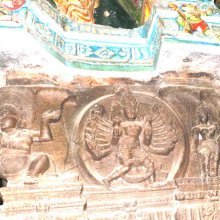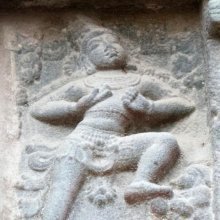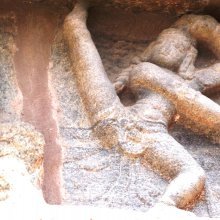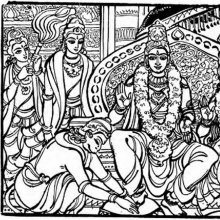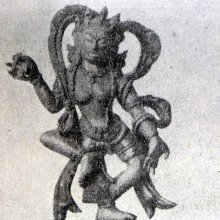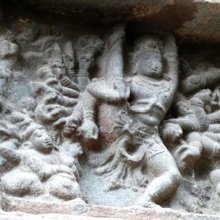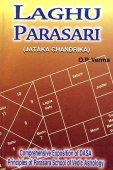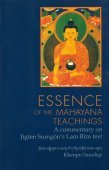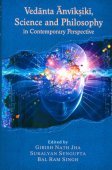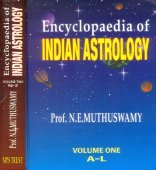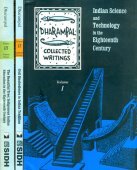Pride: 3 definitions
Introduction:
Pride means something in Hinduism, Sanskrit, the history of ancient India. If you want to know the exact meaning, history, etymology or English translation of this term then check out the descriptions on this page. Add your comment or reference to a book if you want to contribute to this summary article.
Images (photo gallery)
(+2 more images available)
In Hinduism
Natyashastra (theatrics and dramaturgy)
Source: Shodhganga: Elements of Art and Architecture in the Trtiyakhanda of the Visnudharmottarapurana (natya)1) Pride (as a quality) in Indian dramas, is denoted by the Sanskrit term Garva and is classified as one of the various “transitory feelings of mind” (sañcāribhāva) in Indian Dramas, according to the Sāhityadarpaṇa.—The state of utsāha is the sthāyībhāva of vīrarasa. It increases energy and excitement to mind and projects the heroic sentiment through the sañcāribhāvas i.e., transitory feelings of mind like, e.g., garva (pride).
2) Pride (expression) is associated with Udvāhita: one of the “seven movements of the head” (in Sanskrit Dramas), as conveyed through Āṅgikābhinaya: one of the four divisions of Abhinaya or “ways to convey or represent one’s emotion to others”, according to the Nāṭyaśāstra and the Viṣṇudharmottarapurāṇa, an ancient Sanskrit text which (being encyclopedic in nature) deals with a variety of cultural topics such as arts, architecture, music, grammar and astronomy.—The āṅgikābhinaya includes the histrionic representation of the limbs which is simply known as physical gestures. In the Viṣṇudharmottarapurāṇa, seven types of movements of the head are recorded. The Udvāhita movements shows raised head with pride.
3) Pride is also associated with Nirbhugna: one of the “seven movements of the chest”.—In the term nirbhugna, the word bhugna is preceded by the prefix nir, which is used to denote the opposite form. So, the opposite of the word bhugna is nirbhugna which means not crooked. Justifying the meaning of the term nirbhugna, the Viṣṇudharmottarapurāṇa suggests that in the position of nirbhugna, the actor should slightly stiff the chest to show the status of pride.

Natyashastra (नाट्यशास्त्र, nāṭyaśāstra) refers to both the ancient Indian tradition (shastra) of performing arts, (natya—theatrics, drama, dance, music), as well as the name of a Sanskrit work dealing with these subjects. It also teaches the rules for composing Dramatic plays (nataka), construction and performance of Theater, and Poetic works (kavya).
Ayurveda (science of life)
Source: International Research Journal of Ayurveda and Yoga: Role of Ayurveda in the Management of Manas Roga (Mental Disorders)Pride is denoted by the Sanskrit term Māna and refers to a mental function described in Ayurveda.—Present era is the era of psychiatric problems. The diseases primarily due to involvement of rajas and tamas, which are considered as true manas-rogas or manas-vikara these are perceived as a result of extreme involvement of mental function [e.g., Mana (pride)] in its practical physiological function and hence require correlation.

Āyurveda (आयुर्वेद, ayurveda) is a branch of Indian science dealing with medicine, herbalism, taxology, anatomy, surgery, alchemy and related topics. Traditional practice of Āyurveda in ancient India dates back to at least the first millenium BC. Literature is commonly written in Sanskrit using various poetic metres.
India history and geography
Source: Singhi Jain Series: Ratnaprabha-suri’s Kuvalayamala-katha (history)1) Pride was contemplated on as evil, by those pursuing the spiritual life in the Hermitages (or Ashrams) of ancient India, as vividly depicted in the Kathās (narrative poems) such as Uddyotanasūri in his 8th-century Kuvalayamālā (a Prakrit Campū, similar to Kāvya poetry).—Page 87.20-28: Here is a vivid description of the intellectual and spiritual life in the Aśrama of a Jaina Muni. Uddyotanasūri gives a list of twenty-one methods of study and discussions and approaches to the tenets of religion and philosophy, [e.g., condemning the evils of egoism, pride and anger and greed] [...]. Also see the description of the hermitage of Divākara Mitra described by Bāṇa in the Harṣacarita.
2) Pride was commonly depicted on the Saṃsāracakra paintings (representing scenes of human life), according to the Kuvalayamālā.—Page 185.21 f.: Here follows a description of a printed scroll illustrating the Jaina conception of saṃsāracakra. [...] The saṃsāra-cakra illustrated the three worlds of hell, human world and the world of gods. [For example:] Persons puffed with pride of their high families; persons in the grip of greed; persons although ignorant feigning knowledge and holding scriptures in their hands.

The history of India traces the identification of countries, villages, towns and other regions of India, as well as mythology, zoology, royal dynasties, rulers, tribes, local festivities and traditions and regional languages. Ancient India enjoyed religious freedom and encourages the path of Dharma, a concept common to Buddhism, Hinduism, and Jainism.
See also (Relevant definitions)
Starts with: Pride of bolivia, Pride of china, Pride of india, Pride of madeira, Pride of persia, Pride of the meadow, Pride-of-barbados.
Ends with: Barbados pride.
Full-text (+1390): Mana, Mada, Garva, Abhimana, Darpa, Dhanamada, Ahamkara, Kulabhimana, Atopa, Vismaya, Smaya, Nirabhimana, Samkshobha, Avashyaya, Atimana, Dhanadarpa, Mamata, Abhimani, Anahankara, Ahankriti.
Relevant text
Search found 299 books and stories containing Pride; (plurals include: Prides). You can also click to the full overview containing English textual excerpts. Below are direct links for the most relevant articles:
Trishashti Shalaka Purusha Caritra (by Helen M. Johnson)
Part 5: Marīci’s pride < [Chapter I - Previous births of Mahāvīra]
Part 6: Ajita’s rule as king < [Chapter III - The initiation and omniscience of Ajita]
Part 21: Sermon on the kaṣāyas < [Chapter V - Śrī Dharmanāthacaritra]
A study of the philosophy of Jainism (by Deepa Baruah)
Chapter V.f - Means of liberation (the three jewels) < [Chapter V - Bondage and Liberation]
Chapter IV.b - Two bodies of the Self (subtle and gross) < [Chapter IV - The concept of Self]
Chapter V.d - Nature of liberation (mokṣa) < [Chapter V - Bondage and Liberation]
Dhammapada (Illustrated) (by Ven. Weagoda Sarada Maha Thero)
Verse 62 - The Story of Ānanda, the Rich Man < [Chapter 5 - Bāla Vagga (Fools)]
Verse 150 - The Story of Nun Rūpanandā (Janapadakalyāni) < [Chapter 11 - Jarā Vagga (Old Age)]
Verse 221 - The Story of Princess Rohini < [Chapter 17 - Kodha Vagga (Anger)]
Dialectic of Protest: James Baldwin’s No Name In The < [October – December, 1996]
Freedom and Dissent – Our Traditions < [April – June and July – September, 1996]
Salutation < [July – September 1972]
Ramayana of Valmiki (by Hari Prasad Shastri)
Chapter 106 - Ravana reproaches his Charioteer < [Book 6 - Yuddha-kanda]
Chapter 27 - Sarana continues his Deposition < [Book 6 - Yuddha-kanda]
Chapter 18 - Ravana goes to the Ashoka Grove < [Book 5 - Sundara-kanda]
Indian Medicinal Plants (by Kanhoba Ranchoddas Kirtikar)
Related products
